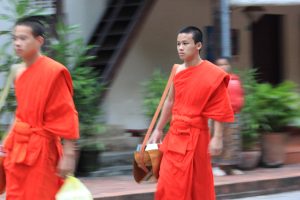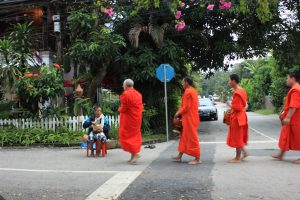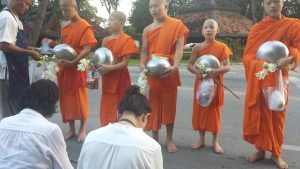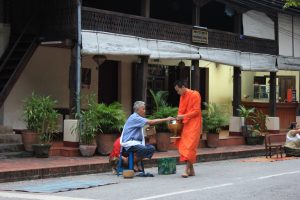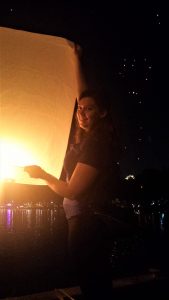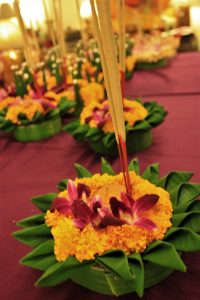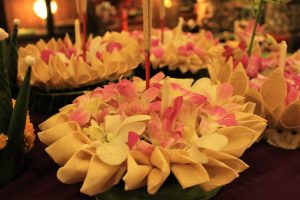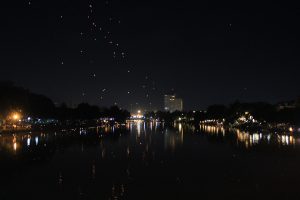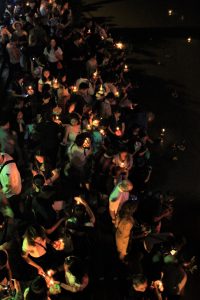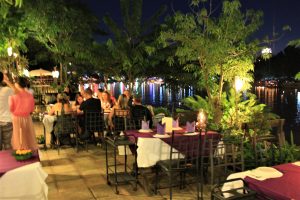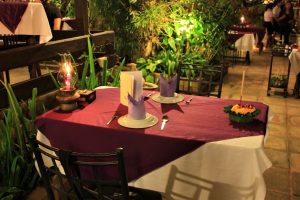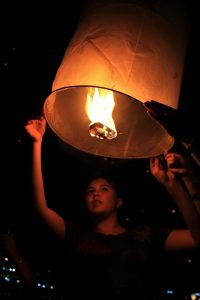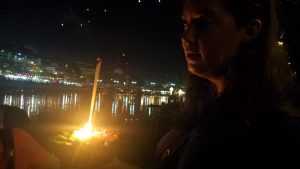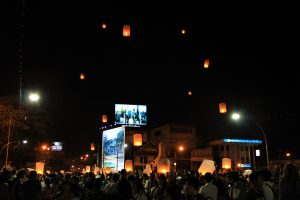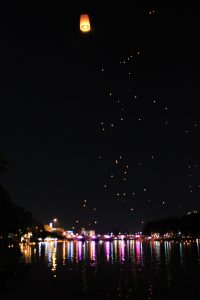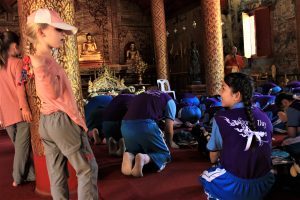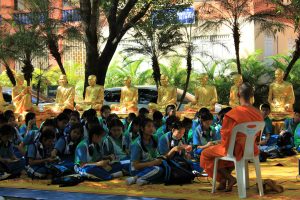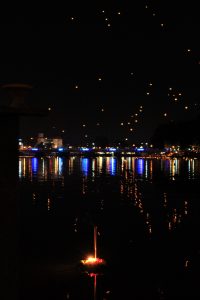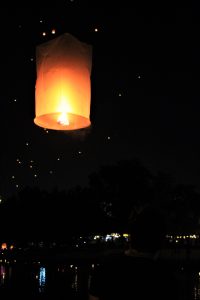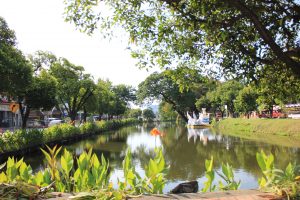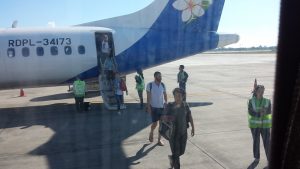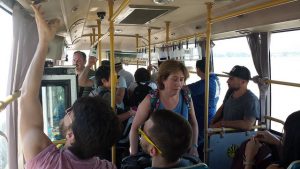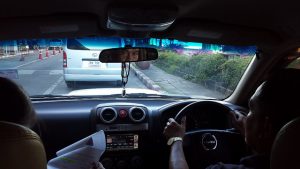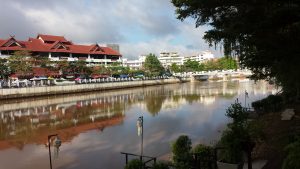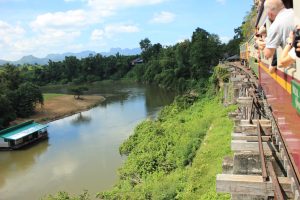
By Courtney Ridgel
I grew up hearing about WWII from my grandparents, and I studied abroad in France where I had the chance to observe the rusting relics around the beaches of Normandy firsthand. When the chance came to visit another infamous WWII site, the Death Railway, I felt that I couldn’t pass up the chance – both to pay my respects, and to enjoy another adventure in beautiful Thailand.
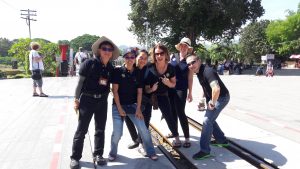
I was joined by the Thailand office team – Nicole, Chris and Joy, along with one of our top guides in Bangkok – Well, and together we met at the hotel for an early-morning start to head out to Kanchanaburi in the Thai countryside. To my great surprise, our driver for the day had brought his personally outfitted van which would not have been out of place at a bachelorette party, and came with light up etched glass displays with koi fish, bejeweled seats, an impressive sound system and a drop-down TV. There we were on our way to visit memorials dedicated to a particularly harsh piece of history, riding along in great luxury, compete with coffees from a drive-through Starbucks at Joy’s insistence, and I could not help but see the irony and be grateful for what I have in life (and laugh about the van).
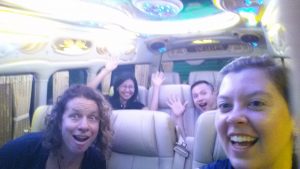
For those who are not already aware, the ‘Death Railway’ was constructed during WWII by Allied POWs and forcibly drafted Southeast Asians known as Romusha, to bring supplies to the front in Burma (now Myanmar). The difficult terrain, jungle diseases, malnourishment, beatings and around-the-clock work schedule led to the deaths of 12,621 Allied POWs, and thousands of Ramusha (the exact numbers are unknown, and the estimates vary), giving the railroad its name. Now, the railway serves as a tourist attraction and mode of transportation to some of the small towns in this area.
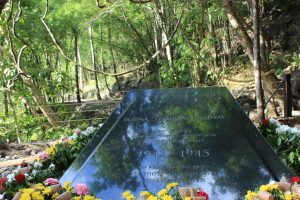
As we drove out into the green countryside, our first stop was to visit the main Kanchanaburi War Cemetery in downtown Kanchanburi, where 6,982 fallen POWs from Australia, the UK and the Netherlands are interred. The cemetery also displays a plaque to commemorate 11 fallen Indian POWS who fought for the British during the war. (The bodies of fallen American POWs were repatriated after the war.) Across the street, we visited the small but well-done The Thailand-Burma Railway Centre which houses 8 main galleries which detail the construction of the railway through first-hand accounts, photographs and artifacts.
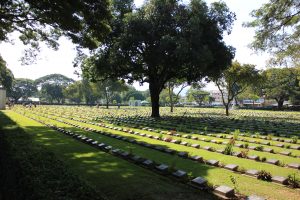
After this somber start, we next drove to the train station, at the edge of the infamous Bridge over the River Kwai. I could not help but notice the vendors who had set up a temporary market selling souvenirs such as soaps carved in the shape of flowers, t-shirts and coconut drinks. The weather was lovely with beautiful bright sunshine, blue skies and beautiful green vistas along the riverbanks. Even knowing where we stood, I found it difficult to feel anything but cheerful, and we strolled across the bridge with the other tourists while we waited for the train.
[metaslider id=13058]
The train itself was a joy – an antique passenger train from another era with uniformed ticket checkers and waiters bringing beverages – and I couldn’t help but picture my grandparents coming along for the ride with me. I know they would love it as much as I did. We enjoyed the breeze blowing through our hair and took in the beautiful and peaceful countryside rolling past.
[metaslider id=13093]
Once we reached the small town of Krasae where we disembarked to visit a large Buddha statue built into a cave in the cliff, and to enjoy lunch at the Krasae Cave Restaurant, looking out over the river. I also took note of a WWII era bomb which had failed to detonate sitting on a plinth in the middle of town, and it served as a reminder that this lovely place was once a war-zone, and that the allied forces had destroyed as much of the railway as they could to prevent its use in bringing supplies to the front in Burma. After we’d visited the impressive Buddha, had our fortunes revealed through the fortune sticks, stuffed ourselves on a big Thai lunch of salad, noodles, rice, shrimp, chicken and curry, and did some souvenir shopping, we reunited with our driver and bedazzled van.
[metaslider id=13202]
We drove past green winding green hillsides and small towns until we reached our next stop – the Hellfire Pass Memorial Museum, which the Australian government built and maintains through a partnership with the Thai government. After exploring the museum, we strolled down the path through the bamboo forest until we reached the old railway bed. The railway here had long since been removed, with only a short section left as a memorial to all those who died here. The jungle scenery was beautiful but there was a quiet and sad eeriness to the place. Small Australian flags and mementos had been left behind by comrades, loved ones and relatives, hinting at what this cut in the railway grade used to look like. Feeling a strange sense of standing in both the 1940’s and in 2016 at the same time, we walked back up the hill to our waiting driver and began the journey back to Bangkok, stopping to purchase pumpkins from a roadside stand and feed fish along the way. It is a memory that will stay with me – both as a wonderful day with friends, and as a reminder of those who served.
[metaslider id=13155]
If Kanchanaburi interests you, check out our new two-day Kanchanaburi tour which includes spending time at an elephant sanctuary.… Read more »


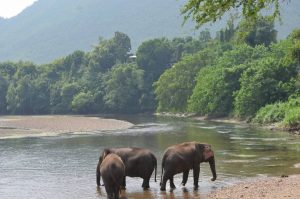
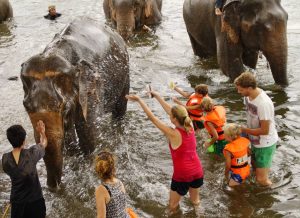

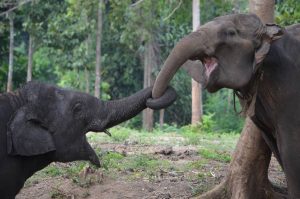 …
… 
